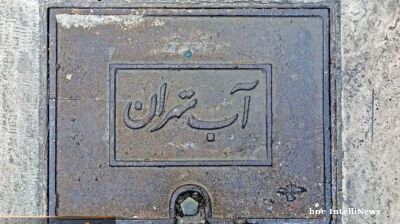The Middle East is grappling with a heatwave of unprecedented intensity as temperatures in Iraq and Iran have soared to nearly 50°C (122°F), causing a series of electricity failures across the region as people prepare to make the most significant movement for the annual Arba'een pilgrimage in Iraq.
This extreme weather event is not only causing immediate discomfort and danger but is also raising alarming questions about the region's future habitability in the face of accelerating climate change as both countries struggle to deal with the ongoing onslaught of hot weather.

In Tabas, Iran, the mercury hit a staggering 49.9°C (121.8°F), while Nasiriyah in Iraq recorded 48.3°C (118.9°F). These are not isolated incidents; across the region, multiple locations are experiencing temperatures well above 45°C (113°F). A report by Tehran University warned: "These temperatures are not just uncomfortable – they're dangerous. We're seeing the real-time effects of climate change, and it's happening faster than many models predicted."
The impact of this heatwave is far-reaching. In Iran's Sistan region, all government offices and banks have been forced to close. Isfahan is bracing for continued high temperatures until at least mid-next week. Adding to the misery, dust storms and high winds are exacerbating conditions in northern and eastern regions. Local governments are struggling to cope with the increased demand for electricity as air conditioning usage skyrockets, leading to power outages in several areas.
Mohammed, a 32-year-old resident of Basra, Iraq, describes the conditions: "It's unbearable. We can't work, we can't sleep. This isn't normal, even for summer in Iraq." His experience is echoed by millions across the region who are finding daily life increasingly challenging in the face of these extreme temperatures.
Despite the dangerous heat, millions of Shia Muslim pilgrims are making their way to Karbala, Iraq for the annual Arba’een pilgrimage. This intersection of climate change and religious tradition is creating unique challenges. Iraqi public health officials have warned that the this year’s cross border pilgrimage could be potentially fatal with the high temperatures similar to the deaths caused by a heatwave in Mecca earlier this year on the annual Hajj where more than 1,300 people reportedly died from heatstroke.

Arba’een, which brings about one of the largest religious gatherings in the world – and is sometimes dubbed the biggest movement of men, women and children on the planet – comes 40 days after Ashura, the martyrdom anniversary of the grandson of the Prophet Mohammad and the third Shia Imam Hussein. Seen as a more accessible and affordable way of showing piety than the annual Hajj to Saudi Arabia, which is strictly limited by the setting of a maximum number of places for each country, Arba’een has become increasingly popular with Shi’ite Iranians, Afghans and Pakistanis, who visit the shrines of their saints in neighbouring Iraq, where they gather in the holy city of Karbala, 100 kilometres southwest of Baghdad.
In 2018, it was reported that some 18mn visas were issued by Iraq to Iranians entering the country with an average of more than 3mn people making the journey on foot from several neighbouring states.
Local communities along the pilgrimage routes are adapting to provide relief. Improvised water stations and ice supplies line the roads. Some resourceful locals are even using heavy machinery, like bulldozer shovels, as makeshift fruit platters to feed pilgrims. Volunteers from Iran and Iraq are setting up cooling stations and medical tents, showcasing human resilience in the face of extreme conditions.
The head of Pre-hospital Emergency and Disaster Management at Abadan University of Medical Sciences, while providing necessary recommendations to pilgrims, said: “Given the hot weather, heat exhaustion is the most important issue for this year's Arba'een, which so far has not caused any problems and has been properly managed.”
Afshin Daryanavard, in an interview with IMNA reporter in Khuzestan, stated: Given the severe heat these days, heat exhaustion is the first issue that pilgrims face.
“However, we haven't had any dangerous heat exhaustion problems so far, and all cases of heat exhaustion have been managed without any serious issues,” he added. He further noted: “We ask people to continue to travel mostly in the early morning or after sunset to avoid problems.”
"We ask pilgrims, if they must travel during the day, to definitely use sunscreen with high SPF, because during these hours, UV radiation in the area is higher than normal."
He added: "Frequent consumption of fluids and avoiding very sweet drinks, using light-coloured, loose clothing made of felt fabric is also recommended."
Climate models suggest that heatwaves like this could become more frequent and intense in the coming decades. It’s predicted by that by 2050, average summer temperatures in parts of the Middle East could regularly exceed 50°C. This would make large swathes of the region virtually uninhabitable without significant adaptation measures.
News

New clashes erupt on Pakistan–Afghanistan border
Fresh violence has broken out along the Pakistan–Afghanistan frontier, as forces aligned with the Taliban engaged Pakistani border guards in what sources say was a heavy exchange of fire.

Do 60,000 maps seized by authorities in China identify Taiwan as independent?
Chinese customs authorities in Shandong province have reportedly confiscated 60,000 maps destined for export after alleging they contained “serious mistakes” related to the depiction of Taiwan and the South China Sea.

Trump's $20bn boost for Argentina comes with electoral strings
Argentine President Javier Milei met with US President Donald Trump at the White House on October 14 to strengthen bilateral ties, securing a crucial - but conditional - endorsement ahead of Argentina's midterm legislative elections.

Kazakhstan’s EDB signs Abu Dhabi Fund MoU to development to strengthen strategic cooperation
The Eurasian Development Bank and the Abu Dhabi Fund for Development have signed a MoU aimed at enhancing strategic, technical and operational cooperation to support sustainable socioeconomic development in countries of mutual interest.




